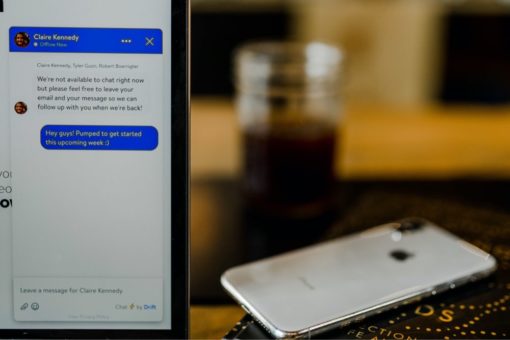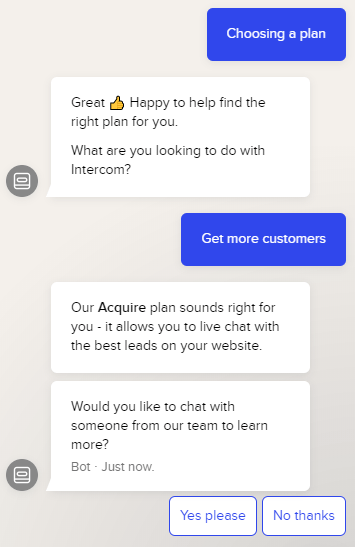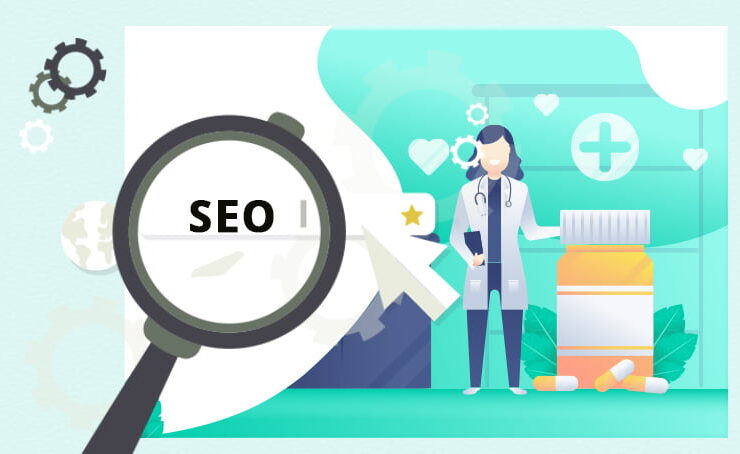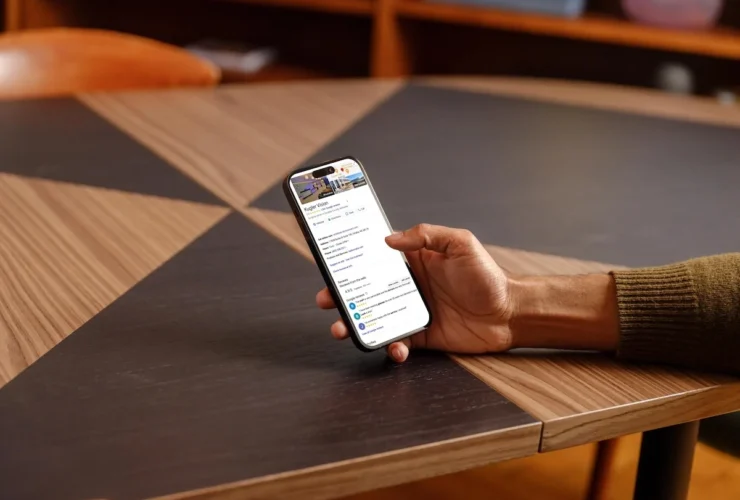How to Use Live Chat to Get More Patients: The Definitive Guide
How Healthcare Providers Can Use Live Chat to Get More Patients
9 out of 10 doctors have a huge problem on their hands, whether they realize it or not: when potential patients land on their website, they will leave without ever connecting with you, requesting more information, or taking the next step.
In the United States alone, poor customer service costs small- and medium-sized businesses an estimated $75 billion each year. Not only does poor customer service contribute to poor patient experiences, but it leads to fewer word-of-mouth referrals, which carries a very real financial cost.
If your livelihood depends on inbound leads from your website taking the next step, not engaging with website visitors is a huge missed opportunity – one that means unrealized potential and lost revenue.
But how can physicians solve this problem? How can doctors connect with their patients more effectively to turn website traffic into revenue?
There’s one technology that every doctor needs to be using to capture their patients’ attention, connect instantly, and turn leads into revenue: live chat.Why is Live Chat Important?
Live chat is by far one of the best ways to immediately connect with website visitor and answer their questions. Unlike many other forms of contact, live chat software provides a convenient way for you to connect with leads and provide them with a great experience.
Live chat is good for the bottom line, too.
A survey by Zoho found that 22% of businesses who implemented live chat saw a 5-10% increase in revenue as a result of offering live chat as a contact option. Another 4% of businesses said that they saw an increase of between 11% and 15% because of implementing live chat.
Also, visitors who chat with your practice are more likely to become paying patients. According to live chat provider Intercom, people who chat with a business are 85% more likely to become customers than people who don’t. Intercom also found that every message increases the chance of converting someone into a lead: only one message over live chat increased conversion odds by 50%, but two messages increased those changes by 100%.
The primary reason website visitors love live chat is because of its immediacy. Most patients don’t have the time to submit a contact form and wait days for a response – they are just looking for a quick answer.

Thanks to its immediacy, live chat has an incredible satisfaction rate. According to a recent study by Zendesk, live chat has the highest customer satisfaction rate of all contact methods, at 92%. What’s more, live chat is good for increasing the chances of repeat visits: eMarketer found that 63% of consumers who used live chat on a website are likely to return to that site.
A Hubspot study found that consumers expect to receive a response from a business within 10 minutes from the moment they’ve first reached out. They aren’t likely to receive a response that quick from a contact form on your website.
How is Live Chat Better than Phone Support?
But wait, phone calls are immediate, right?
Well, yes, phone calls can be a good way to connect with patients immediately, but the problem is that not everybody likes to talk on the phone.
But some people – especially those in younger generations – don’t like to talk on the phone. They want a quick answer to their question, but they might not want to speak to someone over the phone.
There’s a mismatch between businesses’ expectations and customers’ preferences. 42% of businesses think customers prefer phone support over live chat, but that belief is misguided: 79% of consumers prefer live chats because they offer instant responses, while only 32% of patients prefer a phone call.
So, not all patients want to talk on the phone. But that’s not the only problem with relying on phone calls as the only way to get in touch with your practice.
What if your staff isn’t around to answer the phone? What if patients get sent to voicemail?
With a phone call, the impetus is then on the patient to leave a message and provide a way to get back in touch with them. It may take a few days for you to get back with them, which isn’t what they were looking for. That’s another opportunity missed.
By contrast, live chat provides a way to connect immediately – and if for some reason someone isn’t around to answer prospective patients, there are other ways to capture their information and get back in touch quickly.

What’s Wrong with Contact Forms?
A common objection to using live chat is the fact that there are contact forms on their website.
Many doctors think that the contact forms on their website will solve the same problem that live chat does – but they’re wrong.
Contact forms have the same problem that voicemails do – patients may have to wait a few days to get a response to your question. By the time you get back to them, they may have already moved on and forgotten about you – or worse yet, one of your competitors may have answered their question first and won their business. Yet again, another opportunity list.
There’s also the issue of expectations and patient experience. If you take a long time to get in touch with a patient, it diminished your brand reputation in that patient’s eyes. If your practice took three days to answer a simple question, do you think a patient is likely to book a consultation? And even if that patient did book an appointment with your practice, that relationship didn’t get off on the right foot.
Contact forms often don’t live up to patient expectations because of reliability problems. Many contact forms are incorrectly installed on the website, or proper email authentication hasn’t been set up. This can lead to emails from patients hitting the spam folder and never being seen.
It’s the same as taking a stack of valuable leads and throwing them directly in the trash – a complete waste of potential revenue.
By contrast, live chat is much more immediate, and you won’t have to worry about configuration problems – chats are guaranteed to end up where they need to.
Static Contact Forms vs. Proactive Live Chats
Another problem with contact forms? They may be predictable, but they’re mind-numbingly boring.
By nature, contact forms are static. Each form only serves one purpose, and the scope of a form may be very limited in nature. If a patient wants to ask a question or submit information but there isn’t a field in the contact form for that purpose, they might be out of luck.
By contrast, live chat is a much more dynamic experience. Not only can patients ask all sorts of questions or submit just about information imaginable, but chatbots can engage with patients just like a real human could.
Live chat (and chatbots) can be much more dynamic and proactive in reaching out to people who are visiting your website.
For example, chat bots can send targeted message to patients based on their behavior, or depending on which page on your website they might be viewing. These messages are more likely to receive engagement and convert website visitors into leads than static live chat or contact forms alone.
For example, if a patient is looking at the services your practice offers, you could have the chat bot ask if they have any questions. If a patient is looking at specific procedure, your chat bot could offer them a free guide to that procedure, or some other offer.
In exchange, you get a small amount of information from them, such as their name and email address, which turns that visitor into a lead that you can nurture and (hopefully) turn into a patient.
These proactive chats are incredibly effective. Olark found that 33% percent of proactive chats initiated received a response from website visitors.
Good luck engaging patients like this with static contact forms.
Live Chat and HIPAA Compliance
But wait, you say – what about HIPAA?
As a healthcare provider, that’s a very valid question. The good news is that with a few best practices in mind, you can leverage live chat while staying HIPAA-compliant.
One thing to note: a discussion about “live” messaging solutions wouldn’t be complete without mentioning SMS messaging (also called “text messaging”). However, the Joint Commission on HIPAA rules has already made a decision: SMS is not secure and may lead to a violation of HIPAA rules. So when it comes to your patients’ native texting apps there is no such thing as HIPAA-compliant text messaging.
HIPAA relates to the communication and transmission of Protected Health Information (PHI), which includes diagnoses, treatment information, medical test results, as well as demographic information such as birth dates, gender, ethnicity, and contact and emergency contact information. Because many live chat softwares require that you collect some contact information, HIPAA rules apply.
HIPAA regulations apply to all communications that contain Protected Health Information, whether oral, written or electronic.
There are four main requirements for protecting sensitive patient Protected Health Information (PHI):
- Audit Controls: live chat solutions must be able to create and record audit trails of all interactions containing PHI. Most live chat solutions will meet this requirement, as many providers will archive all transcripts by default.
- Built-In Encryption: live chat solutions must be able to encrypt plain text into code, both while in transit and while at rest. Encryption is becoming standard on most messaging platforms these days, so most live chat providers should be able to meet this requirement.
- Secure Data Centers: storage must have a “high level of physical security.” Additionally, the data centers that serve your live chat provider must be US-based.
- Recipient Authentication: communications must go to the intended recipient and no one else. Because of this, users must not be given the ability to have chat transcripts emailed, as that could lead to information being sent to an incorrect email address.
While there are many wonderful live chat providers out there, only a few will meet these strict requirements to meet HIPAA compliance.
Before selecting a live chat provider, you will want to ensure they comply with all relevant regulations. Some live chat providers will sign a HIPAA Business Associate Agreement (BAA), so it’s worth researching and asking before you select a provider.
Some of the best HIPAA-compliant live chat providers for healthcare are HealthEngage, LiveChat, MedChat, and HelpScout.
So by now, you’re convinced that live chat software and smart chatbots are the best way to turn website visitors into real leads on your website. But how should you start using live chat to get more patients?
The good news is that live chat software is incredibly easy to install.
How to Install Live Chat Software on Your Website
Installing live chat software on your website is a simple process. All you need to do is obtain a short snippet of code provided by your live chat software provider. Paste this code into the backend of your website, and you will be able to chat with website visitors immediately.
You may need to have your website developer install this code for you, but it’s a simple addition and shouldn’t take them more than a few minutes.
Also, you’ll need to make sure you have an SSL Certificate installed on your website to secure and encrypt all website communications before you integrate live chat.
Once live chat is installed on your website, there are a few things you need to do to ensure that it’s functioning properly.
The “Go-Live” Checklist for Live Chat
- Test your live chat experience across different devices – both desktop and mobile. In recent years, there has been an increase in live chats from mobile devices. According to Comm100, 52% of all live chats in 2018 came from mobile devices, and that number is only on the rise.
- Test your live chat experience across different browsers and operating systems. While most live chat systems will work on all browsers, devices, and operating systems, it’s important to test the experience on each platform to make sure your customer’s experience doesn’t suffer.
- Test your live chat form to see what happens if someone doesn’t answer right away. While immediate responses are crucial to doing live chat well, there will be times when you can’t get to everyone right away, so it’s important to know what a customer will experience when their chat isn’t picked up right away. Does a bot ask for an email address so a staff member can follow up later? Or are your customers left waiting for a response that will never come?
Once you’ve run through this “go-live” checklist, you’re off to the races.
However, to really get the most out of live chat, there are still a few best practices you want to make sure you’re implementing…
Best Practices for Live Chat
There are lots of things live chat is capable of, but you can’t just “set it and forget it.” In order to get the most out of live chat with your patients, there are several best practices to keep in mind.
Adhering to these best practices will give you the best chance of delighting your website visitors and converting more visitors into leads for your business:
- Respond Quickly. The best way to provide an exceptional experience for your customers is to set a precedent of “wow” by responding incredibly quickly. You want your customers to be amazed at how quickly they can connect with someone and get a response. According to Kayako, 24% of consumers say long wait times are their biggest frustration, so delight your customers by responding incredibly quickly.
- How fast is fast? In 2018, the average first response time was 48 seconds. A survey from Drift shows that 77% of consumers expect an instant response when reaching out via live chat, so you want to make this time as short as possible. If you can’t respond quickly, it may be best to not use live chat at all.
- Set office hours for your live chat software. You don’t want your customers waiting a long time for a response if nobody is around in your office. This will just frustrate customers and cause them to think poorly of your business. If your business is closed, be sure to disable your live chat function outside of business hours, or use an AI-assisted chatbot to collect patients’ information whenever you’re away – but if you do, be sure to set realistic expectations about when they can expect a response. Many live chat providers allow you to set “office hours” – just be sure it’s a feature of the provider you select.
Now that you have live chat installed on your website and are adhering to best practices, it’s time to take a look at some of the more powerful features that live chat software offers. One of those features are chatbots.
How to Create a Chat Bot
We mentioned the power of using live chat to proactively reach out to visitors depending on what content they are looking at on your website. But there’s another way to capture leads on autopilot no matter the time of day: chatbots.
Chatbots are semi-intelligent “robots” that can take user input and give responses based upon that input. These pre-defined “flows” are basically paths that users can take to get to a desired outcome.
Depending on their selections or answers, the chatbot can route them to the right resource or information, connect them to someone at the business directly, or collect their information so someone at the business can reach out.
You’ve probably seen a chatbot that presents you with a few options, like this:

If the user says that they’d like more information about pricing, the chatbot could send them a link to a pricing page. If the user had a frequently asked question, the chatbot could route them to an FAQ page (some live chat providers even offer an option for the chatbot to answer FAQs in real-time).
And of course, if the user said that they would like to speak to a real human, the chatbot could connect the user with a staff member who could “take over” the chat and begin interacting with the user in real-time.
Chatbots aren’t always artificially intelligent on their own, but some are “AI-assisted”, can intelligently learn what a user is looking for, and respond accordingly.
Designing a chatbot the right way takes time and isn’t easy…but when it’s done right, it can be a powerful way to identify and qualify website visitors and turn them into leads for your business.
Perhaps the best thing about chatbots is that they operate 24/7/265 – they can do the hard work of generating leads when your office is closed, or even while you’re asleep.Like proactive live chat, different chatbots can be triggered to show based on user’s behavior or the page they are viewing on your website, so you’re not just limited to one chatbot for one purpose.
If a website visitor is looking at a particular service or procedure, your chatbot can point them towards specific resource, or discover what questions they have about that particular service, rather than more general inquiries.

If a visitor is looking at contact information, your chatbot can proactively ask them if they simply want to contact the practice, or if they’d like to schedule an appointment right then and there.
By using chatbots proactively, you can reduce the friction patients experience to schedule an appointment and increase the number of new patients.
Chatbots in Healthcare: What Not to Do
- Don’t ask for too much information up front. There’s a time and place to collect all of the necessary information you may need from a patient, but the initial contact isn’t the time nor the place. Make sure it’s as easy and frictionless as possible for patients to initiate a chat.
- Don’t make users fill out long forms to start the chat. According to Kayako, customers’ biggest frustrations with using live chat include:
- Support not being online despite live chat displaying as available.
- Being disconnected during a live chat.
- A lot of effort required to start a live chat, particularly having to fill out pre-chat forms.
- Don’t make it hard for patients to connect to a real human. As wonderful as chatbots are, patients should always be able to request to connect with a human, right away. In fact, while many consumers appreciate the fact that chatbots can give them some level of support 24/7, Zendesk found that 70% of consumers prefer chatting to human agents rather than to AI technologies alone. If a real human isn’t available, visitors should be able to leave their name and email quickly and conveniently for a staff member to reach out. If this is necessary, make sure to set realistic expectations about how quickly they should expect a response.
Using Chatbots to Replace Contact Forms
Another great use of chatbots is to replace contact forms on your website.
We’ve already been over the benefits of using live chat instead of static contact forms, but some forward-thinking practices have been using live chat to replace website contact forms entirely.
Many live chat providers will let you launch a live chat window from a click on a link or a button on your website. Rather than having the “Contact Us” button in your website navigation direct users towards a page, you could have it open up a chatbot window instead, so that users can finish their desired action right then and there.
By doing this, patients can get in touch with your practice in a faster and more engaging way than filling out a form. Some level of interaction, whether from a chatbot or a real human, makes this a more engaging and pleasurable experience.
Plus, if your practice is open, these chats can go directly to a staff member who can pick up the chat and answer their questions in real-time. In terms of patient experience, this is a classic case of “under-promise and over-deliver,” and it delights patients every time.








